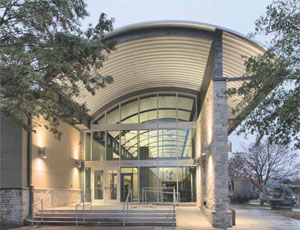Construction is scheduled to start this year on what will be the third-longest cable-stayed bridge in the U.S., linking St. Louis and western Illinois over the Mississippi River by 2014. The scope, limited bids and challenges of the Interstate 70 project caused the winning bid to exceed engineering estimates by almost $40 million.

New St. Louis-Illinois crossing will be challenging but potentially rewarding for the contractor.
On Dec. 30, the Missouri Highway and Transportation Commission (MHTC) awarded the $229.5-million contract to a joint venture of Massman Construction, Kansas City, Mo.; Traylor Brothers Inc., Evansville, Ind.; and Alberici Constructors Inc., St. Louis. The team’s bid was $45.4 million less than that of the competing joint-venture team of American Bridge, Coraopolis, Pa., and the Spanish firm Dragados. Missouri Dept. of Transportation spokesman Andrew Gates said the winning bid was higher than expected because of the small number of bidders, the span’s design requirements, the challenges and risks of working on the Mississippi River and the complexities of working in two states. “The contractor just estimated the risk factors a bit differently than the designer and owners did,” says Gates.
The design, by MoDOT and consulting engineer HNTB Corp., Kansas City, Mo., includes a 1,500-ft main span, seismic and wind considerations and two 460-ft-tall support towers. The team will have to deal with the river’s size and unpredictability, heavy barge traffic and limited access because of floodwalls and levees. The complexities of working in two states include satisfying two sets of regulatory agencies, working in two labor markets and dealing with two sets of state laws.
After identifying four qualified potential bidders that might build the structure, MoDOT solicited their input during the design process, which already has produced a lot of value engineering on the main span. MoDOT and the Illinois Dept. of Transportation expect more savings from additional value engineering on other parts of the overall $667-million Mississippi River Bridge project, including approaches and related roadwork. “We anticipate some significant savings on the remaining portions of the project from innovative value-engineering concepts,” says Gregory Horn, Mississippi River Bridge project director. “These concepts helped us design a bridge that met the regional requirements for traffic flow and safety, while providing excellent value to the taxpayers of Missouri and Illinois.” Additional funding to offset the higher cost of the main span will come from $11 million saved on a recent I-64 construction project.
The bridge initially will be built with two lanes in each direction, but its design allows for expansion to three lanes each way. It will take I-70 traffic off the Poplar Street Bridge.
The disadvantaged business enterprise (DBE) contract goal for construction of the main span is 18%. MoDOT and IDOT set the aggressive goal based on the kinds of work available and the estimated number of certified DBE companies willing to work on the project. MoDOT and IDOT also are offering a possible $3.5-million incentive for being socially and environmentally responsible. Says Gates, “We want the project to make maximum use of opportunities to be green and to encourage diversity.” The exact requirements the contractor must meet to earn the incentive will be somewhat subjective, with MoDOT and IDOT making evaluations.
“We have left the requirements for the social and environmental goals broad on purpose,” says Gates. “We don’t want to pigeonhole the contractor’s thinking.”

Post a comment to this article
Report Abusive Comment